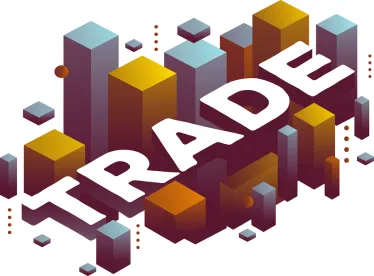On March 8, 2018, President Trump issued formal proclamations announcing new tariffs on imports of steel and aluminum. This announcement follows nearly a week of speculation and debate after the President’s March 1st statement to the media on his intentions to impose tariffs. The tariffs – 25% on steel and 10% on aluminum – represent a significant change in U.S. trade policy. They will likely result in higher prices for all steel, and are expected to trigger a series of WTO complaints and retaliatory actions by U.S. trading partners.
The proclamations mark the start of the next phase of the fight over tariffs. Companies who use steel, regardless of the steel’s origin, need to prepare to engage in the debate.
BACKGROUND
On April 27, 2017, President Trump directed the Department of Commerce to undertake an investigation under Section 232 of the Trade Expansion Act of 1962 in order to determine the national security implications of steel and aluminum imports.
In January, the Department of Commerce, submitted reports to President Trump detailing its findings that steel and aluminum imports threaten our national security. The steel report can be found here and the aluminum report here. Commerce recommended a global steel tariff of at least 24% and a global aluminum tariff of 7.7%. President Trump was given 90 days after receiving the reports to decide on “any potential action.”
On March 1, 2018, the President stated that the U.S. will impose a 25% tariff on steel and a 10% tariff on aluminum. This statement, which came during a press conference, was not accompanied by any documentation or guidance.
The formal proclamation of the tariffs issued yesterday, March 8, 2018, is very important as it provides the first meaningful guidance of the details of the tariffs.
TARIFF PROCLAMATIONS Q&A
The two proclamations signed by President Trump include some important details for companies that are concerned about the impact of the tariffs on their business operations.
Q: What tariff rates did the President announce?
A: 25% on all imported steel and 10% on all imported aluminum.
Q: When do the tariffs take effect?
A: The tariffs will apply to all goods entered into the U.S. on or after 12:01 am eastern time on March 23, 2018.
Q: Does this rate apply to imported steel from all countries?
A: Yes, other than Canada and Mexico.
Q: Canada and Mexico are exempted from the tariff? Why and for how long?
A: Both countries are exempted because they present “a special case” and “the necessary and appropriate means to address the threat to the national security posed by imports of steel articles from Canada and Mexico is to continue ongoing discussions with these countries.” The exemption is indefinite.
Q: Can other countries request exemptions?
A: Yes, the proclamations provide that other countries are invited to negotiate with the U.S. to craft alternative solutions, and if such a solution is agreed to, the President can lift the tariffs. However, the proclamations establish no process for such negotiations, and it is not clear how such negotiations will proceed.
Q: To what specific products do the new tariffs apply?
A: Steel: Harmonized Tariff Schedule (HTS) codes 7206.10-7216.50, 7216.99-7301.10, 7302.10, 7302.40-7302.90, and 7304.10-7306.90. (Steel Chapter of HTS)
Aluminum: (a) unwrought aluminum (HTS 7601); (b) aluminum bars, rods, and profiles (HTS 7604); (c) aluminum wire (HTS 7605); (d) aluminum plate, sheet, strip, and foil (flat rolled products) (HTS 7606 and 7607); (e) aluminum tubes and pipes and tube and pipe fitting (HTS 7608 and 7609); and (f) aluminum castings and forgings (HTS 7616.99.51.60 and 7616.99.51.70). (Aluminum Chapter of HTS)
Q: Can other products be excluded from the tariffs in the future?
A: Yes. The proclamations require the Secretary of Commerce to issue procedures for requests for product exclusions within the next 10 days. In order to be excluded, the proclamations state that the Secretaries of State, Treasury, and Defense must determine, in coordination with White House officials, that a product is not produced in the U.S. in a sufficient and reasonably available amount or of a satisfactory quality. After making such a determination, which will typically include an opportunity for other stakeholders to comment, the exclusion is published in the Federal Register and takes effect.
This is a complex process that will require that applicants for exclusions engage in a mix of legal, policy, and public advocacy in order to successfully make their case.
Q: Are the tariffs subject to review by U.S. courts or the World Trade Organization (WTO)?
A: Yes. U.S. courts will surely hear challenges to the tariffs after they have been levied against imported steel and aluminum products. However, these challenges are likely to take years to make their way through the court system, and the President is normally given wide latitude to shape national security and foreign policy.
The WTO is a different matter, however. While the WTO does not have the power to overturn and nullify the tariffs, if the WTO finds that the tariffs are not consistent with U.S. obligations under the General Agreement on Tariffs and Trade (GATT), and the President refuses to revise the tariffs, the WTO could allow complaining countries to levy costly retaliatory tariffs on U.S. goods. This was the outcome when the Bush Administration imposed tariffs on steel in 2002. The WTO complaint process can take years to become final, although the economic and diplomatic uncertainty surrounding the process often leads to early settlements between countries.
Q: This is bad for my company, what can I do?
A: Yes, and there is little time to waste. Concerned companies need to begin developing and executing an advocacy campaign that educates the public about the harms of these tariffs (specifically as related to employment or ongoing business operations) and making outreach to key Legislative and Executive branch officials who have a stake in the health of the companies.
Specifically, the exclusion process will provide opportunities for companies to have specific steel and aluminum products excluded from the tariffs. However, in order to effectively pursue such exclusions, companies need to begin building their cases now. This means:
• Collecting data on the steel aluminum products the companies utilize, and the countries of origin of the products;
• Analyzing the domestic availability and prices for replacement materials;
• Developing arguments about the economic or national security harms that would occur if products were not available or affordable; and
• Identifying the threat that the tariffs pose to the a company’s ability to compete or survive.



 />i
/>i

